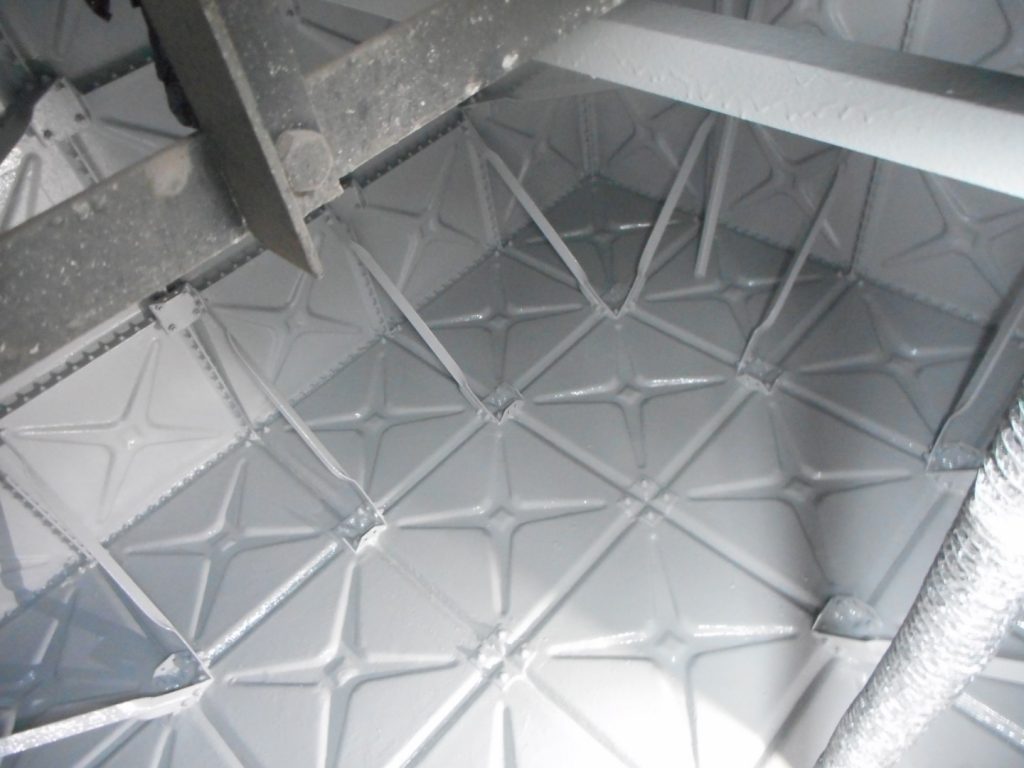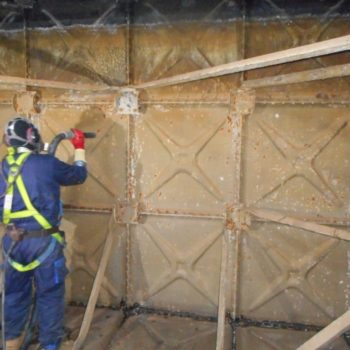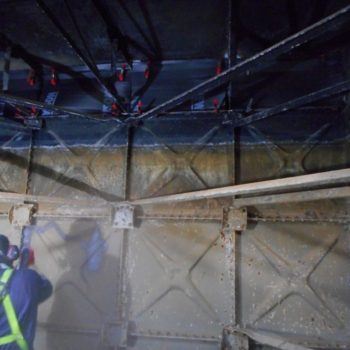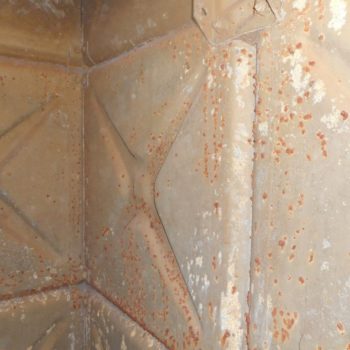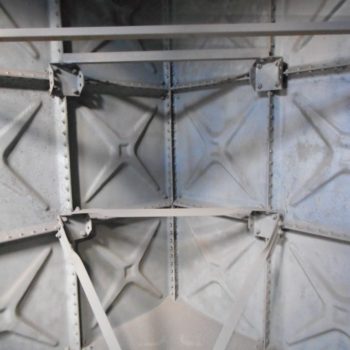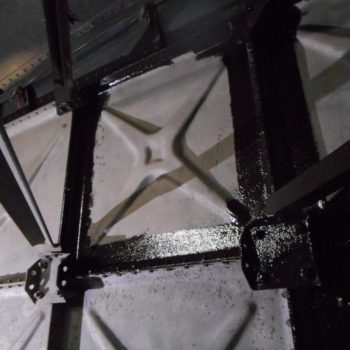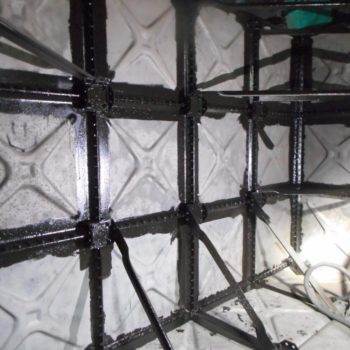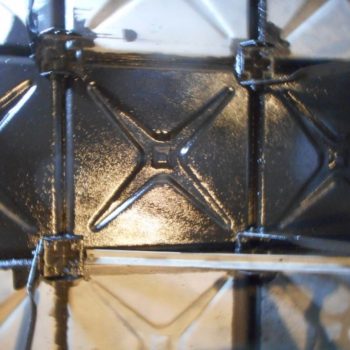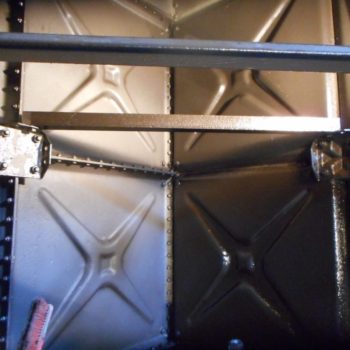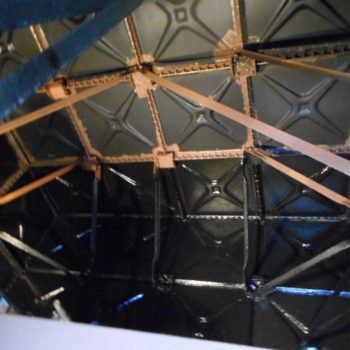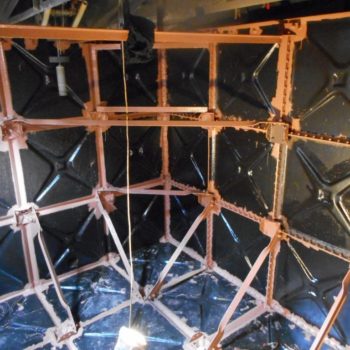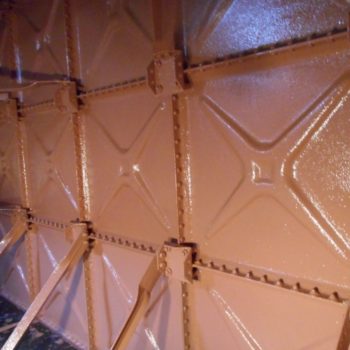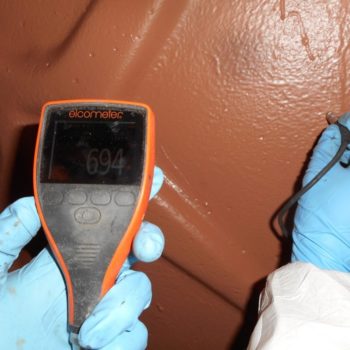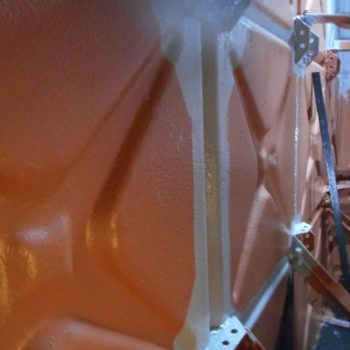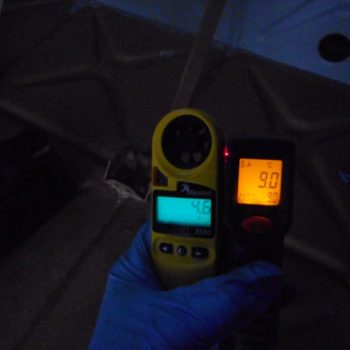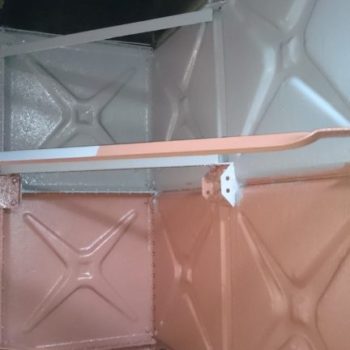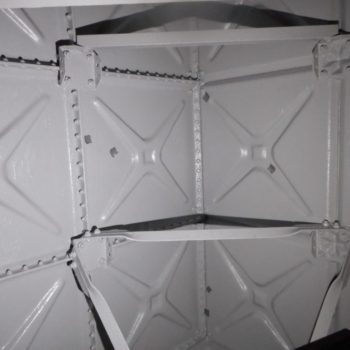THE PROBLEM
Our client required their potable water tank relining due to the poor state it was in, representing a Legionella risk. There was an old bituminous lining above the water line which had rusted away beneath the water over time, leaving a rusting substrate creating a potentially unsafe environment for a drinking water tank.
SOLUTION
Due to the presence of the bitumen coating and corrosion it was necessary to strip the tank back to bare metal. Therefore the entire tank internals were prepared by method of abrasive sponge blasting to industry recognised SA2.5 ensuring that all existing coatings and rust were removed. This also created a suitable profile for excellent adhesion of the epoxy primer. Correct preparation is essential to the relining process as a tank lining system is only as good as the substrate it is adhered to.
Sponge blasting is a new and innovative technology to Corroless Eastern and has been used on recent projects with great success. By using sponge blasting it introduces a virtually dust free blasting process. On this particular project dustless preparation was beneficial as it meant visibility was good, meaning the blaster could see clearly the area being blasted and as a result no areas were missed. In confined spaces, grit blasting can vastly reduce visibility and efficiency.
Following the blasting and thorough vacuum cleaning of the tank all nuts, bolts, angles and edges received a heavy stripe coat of Corroless EPF (black) to ensure full coating thickness. A full coat of Corroless EPF was then applied throughout the tank by method of brush and roller to a minimum wet film thickness of 200 microns.
Once the first coat in the tank lining process had cured a second heavy stripe coat of Corroless EPF (buff) was then applied throughout the tank by brush and roller to a minimum wet film thickness of 200 microns. A full coat of Corroless EPF was then applied throughout the tank by method of brush and roller to a minimum wet film thickness of 200 microns.
Finally once satisfied with the primer coats the tank lining was finished with Corroless RF35, a high quality WRAS (Water Regulations Advisory Scheme) approved glass flake reinforced epoxy. Following the application of another heavy stripe coat a full coat was applied throughout the tank by method of brush and roller to a minimum wet film thickness of 190 microns.
Once cured, the tank was spark tested throughout to identify any pin holes in the coating. Where found they were marked and touched in with Corroless RF35 by brush. Once completed, the tank was cleared and left for the client to put the tank back into service.
Throughout the tank lining process, climatic conditions were regularly checked to ensure the internal atmosphere of the tank remained within the application parameters as detailed by the manufacturer. This is essential to ensure adhesion and performance of the tank lining.
Monitoring of film thicknesses were regularly taken on over 300 separate points within the tank to ensure the minimum film thickness was achieved.
Whilst working in confined spaces such as this tank, safety is of paramount importance. Every operative involved in the process was City & Guilds confined space trained. There was a top man in attendance at the tank hatch at all times anyone was inside. A winched tripod was installed over the hatch to assist in the unlikely event of having to retrieve an unconscious / injured party from the tank. Gas readings were taken before entry, and continual monitoring was carried out inside, throughout the duration of works.
The finished tank lining was provided with a 10 year warranty with an expected service life in excess of 15 years until first maintenance.

